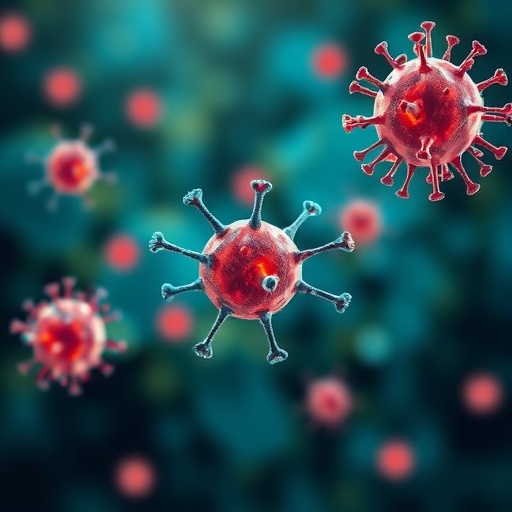Researchers at the newly established Institute of Science Tokyo have unveiled a groundbreaking mRNA vaccine capable of mitigating pathological neovascularization in the retina, a hallmark of age-related macular degeneration (AMD). This pioneering vaccine demonstrated remarkable efficacy in mouse models, providing a less invasive alternative to the current standard of care, which primarily involves repeated intraocular injections. The development marks a significant leap forward in ocular therapeutics, leveraging mRNA technology beyond its conventional use in infectious disease.
Age-related macular degeneration is a leading cause of vision loss globally, particularly among individuals over 60 years old. The disease affects nearly 200 million people worldwide, manifesting most aggressively in its neovascular or “wet” form. This condition is characterized by the proliferation of aberrant blood vessels in the retina, a process termed pathological neovascularization. These vessels are prone to leakage, leading to retinal edema and hemorrhage, gradually impairing central vision if untreated. Present therapies involve frequent intravitreal administration of anti-angiogenic agents such as VEGF inhibitors, a protocol that imposes a substantial treatment burden on patients.
The Institute of Science Tokyo’s novel approach circumvents the need for direct ocular injections. Instead, the vaccine is delivered intramuscularly, inducing a systemic immune response that targets the pathological drivers of abnormal blood vessel growth. This method not only simplifies administration but potentially enhances patient compliance by eliminating the discomfort and risk associated with intraocular injections. The vaccine induces the production of antibodies against leucine-rich alpha-2-glycoprotein 1 (LRG1), a molecule found to be elevated in AMD patients and implicated in promoting angiogenesis in the eye.
The research, led by Professor Satoshi Uchida and Visiting Professor Yasuo Yanagi, employed two distinct mouse models to assess therapeutic efficacy: one with laser-induced choroidal neovascularization (CNV) and another exhibiting spontaneous CNV development. Following two intramuscular injections spaced 14 days apart, both models exhibited robust antibody generation and significant suppression of abnormal vascular growth. Remarkably, reductions in vascular leakage and lesion size reached over 80% in the induced model and about 55% in the spontaneous model, with visible effects emerging within a week post-initial vaccination.
Mechanistically, the mRNA vaccine utilizes a platform that encodes the LRG1 protein, which instigates the body’s immune system to produce neutralizing antibodies. Unlike traditional vaccines targeting pathogens, this therapeutic vaccine targets a host protein involved in pathological angiogenesis. This strategy effectively disrupts the aberrant signaling pathways that fuel neovascularization in AMD, thereby protecting retinal integrity without impeding normal vascular functions.
Safety evaluations revealed the vaccine did not induce deleterious immune reactions or compromise physiological angiogenesis required for ocular health. Importantly, no adverse effects on adjacent retinal tissues or systemic toxicity were observed in treated animals. The therapeutic outcomes mirrored those seen with standard anti-VEGF therapies, yet the novel intervention holds the promise of reduced treatment frequency and enhanced patient tolerability.
The success of this mRNA vaccine builds upon the transformative potential demonstrated by mRNA vaccines throughout the COVID-19 pandemic. This platform allows rapid development and versatile targeting, ushering in a new era where chronic diseases such as AMD can be addressed through immunization strategies. The vaccine’s systemic administration route signifies a paradigm shift in ocular pharmacotherapy, offering hope for drastically improving quality of life for millions suffering from neovascular eye diseases.
Further research is warranted to evaluate the translational potential of this vaccine in clinical settings. Human trials will be critical to confirm efficacy, dosage optimization, and long-term safety. If successful, this innovation could render the painful, frequent eye injections obsolete and reshape the standard treatment landscape for AMD and related retinal disorders.
The findings were published in the esteemed journal Vaccine in August 2025, underscoring the rapidly expanding horizon of mRNA technology applications. Financial support was provided by the Japan Agency for Medical Research and Development, the Japan Science and Technology Agency, and the Institute of Science Tokyo itself. Patent interests are associated with lead researchers, reflecting the commercial and therapeutic potential of the vaccine.
As global populations age, the burden of vision loss due to AMD continues to rise, imposing significant social and economic costs. Therapeutic strategies that can offer durable, less invasive protection against disease progression are urgently needed. This innovative mRNA vaccine embodies a visionary approach, promising to enhance treatment adherence while delivering efficacious results.
In conclusion, the Institute of Science Tokyo’s mRNA vaccine represents a landmark advancement in neovascular eye disease therapy. By harnessing the precision of genetic immunotherapy, it not only curtails pathological blood vessel growth but does so with a delivery method far less taxing than current intraocular injections. This breakthrough has the potential to revolutionize the management of AMD worldwide and pave the way for similar approaches to other chronic conditions characterized by pathological angiogenesis.
Subject of Research: Animals
Article Title: mRNA vaccination mitigates pathological retinochoroidal neovascularization in animal models
News Publication Date: August 13, 2025
Web References: http://dx.doi.org/10.1016/j.vaccine.2025.127451
Image Credits: Institute of Science Tokyo
Keywords: Health and medicine, Clinical research, RNA, Genetic material, Vaccine development, Macular degeneration, Vision disorders, Amyloidosis, Diseases and disorders, Vaccine research




